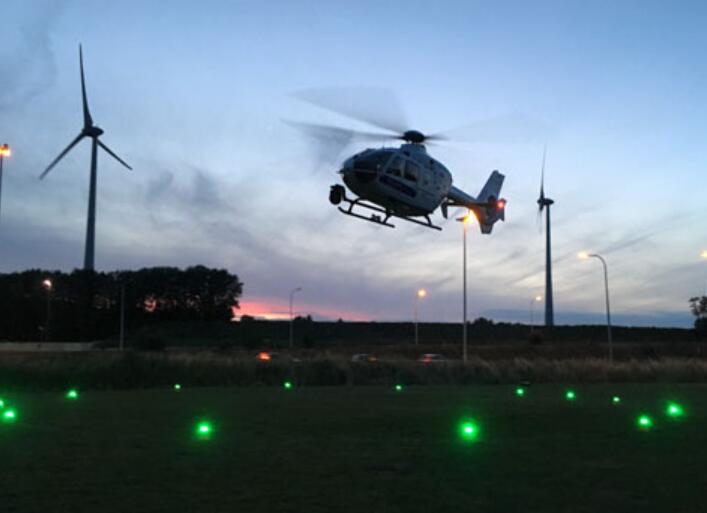In the complex world of helicopter operations, the specifications and requirements of the helipad area are not just technical details but the very foundation upon which safe takeoffs and landings are built. These requirements ensure that helicopters can operate smoothly, minimizing risks and ensuring the well - being of passengers, crew, and those on the ground.
Adequate Space Dimensions
Length and Width: A helipad must have sufficient length and width to accommodate the size of the helicopters that will be using it. For smaller, single - engine helicopters, a minimum helipad size of around 15 meters by 15 meters might be adequate. However, for larger, multi - engine helicopters, the dimensions need to be significantly larger, often up to 30 meters or more in both length and width. This extra space allows for a margin of error during landing and takeoff, ensuring that the helicopter can maneuver safely without risk of hitting any obstacles.

Clearance Area: In addition to the actual helipad surface, there must be a clear - ance area surrounding it. This area, typically at least 1.5 times the diameter of the helicopter's rotor, should be free of any obstructions such as buildings, trees, or power lines. The clearance area provides a buffer zone, allowing the helicopter to hover and make adjustments during approach and departure without interference.
Terrain and Surface Conditions
Flatness and Gradient: The helipad surface should be as flat as possible, with a maximum gradient of no more than 2%. A flat surface ensures that the helicopter can land and take off evenly, preventing any tilting or instability that could lead to accidents. In cases where the terrain is naturally sloped, extensive grading and leveling work may be required to create a suitable helipad area.
Surface Material: The choice of surface material is crucial. Asphalt and concrete are popular options due to their durability and stability. These materials can withstand the weight and force exerted by the helicopter's landing gear and rotor wash. Additionally, they provide a non - slip surface, which is essential for safe operations, especially in wet or icy conditions. Some helipads may also use specialized rubber - coated surfaces, which offer good shock absorption and noise reduction.
Obstacle and Hazard Management
Obstacle Identification and Mitigation: Before constructing a helipad, a thorough survey of the area must be conducted to identify any potential obstacles. This includes not only physical structures but also natural features such as hills or bodies of water. If an obstacle cannot be removed, measures must be taken to mitigate its risk. For example, tall buildings near the helipad may require the installation of warning lights or markers to alert pilots.
Hazardous Area Avoidance: The helipad area should be located away from any hazardous areas, such as fuel storage facilities, chemical plants, or high - voltage power lines. The risk of explosion or electrical interference in these areas poses a significant threat to helicopter operations. Adequate distance must be maintained to ensure the safety of the helicopter and its occupants.
Surrounding Environment Considerations
Noise and Vibration Impact: Helicopter operations can generate significant noise and vibration. When planning a helipad, the location should be chosen with consideration for the surrounding community. This may involve selecting areas that are less populated or implementing noise - reduction measures such as sound - absorbing barriers. Additionally, the impact of vibration on nearby structures must be evaluated to prevent damage.
Emergency Response Access: The helipad area should be easily accessible for emergency response vehicles. In the event of an accident or medical emergency, quick access to the helipad is crucial for providing timely assistance. Clear roads and pathways should be maintained to ensure that ambulances, fire trucks, and other emergency vehicles can reach the site without delay.
In conclusion, helipad area requirements are a comprehensive set of guidelines that cover every aspect of helipad design and operation. From the physical dimensions of the pad to the management of surrounding hazards, each requirement plays a vital role in ensuring the safety and efficiency of helicopter operations. By adhering to these requirements, we can create helipads that are not only functional but also safe havens for helicopters in the skies. As technology and aviation standards continue to evolve, these requirements will undoubtedly be refined, further enhancing the safety of helicopter travel.